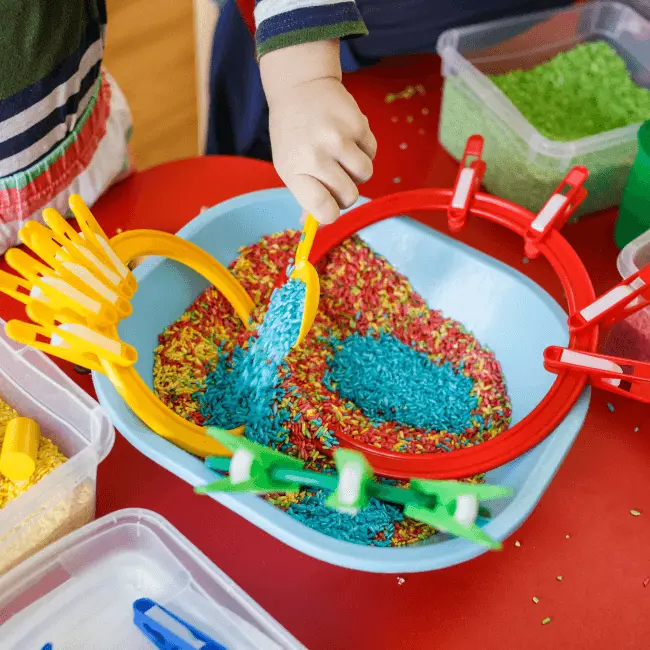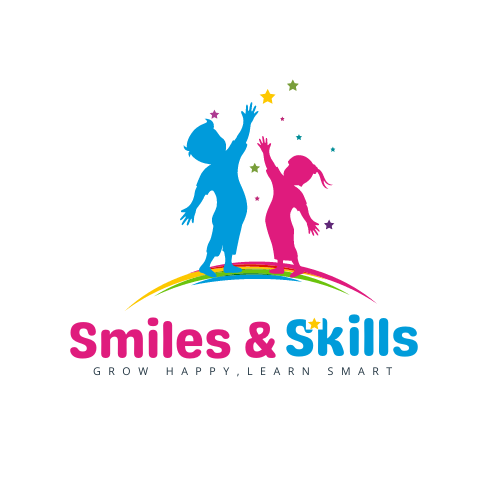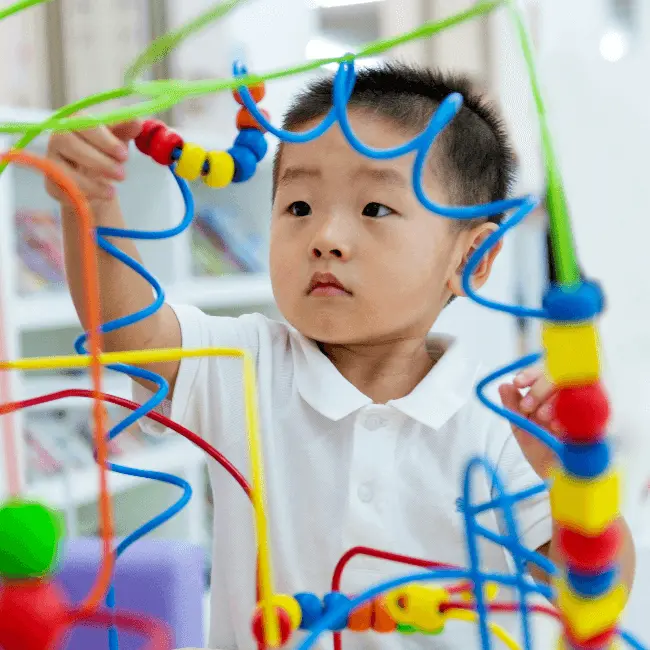Sensory preschool activities engage children’s senses and promote their cognitive, social, and emotional development. These activities include sensory bins, tactile play, art exploration, and sensory walks.

Sensory BIN
Sensory Preschool Activities Overview
Discover a range of engaging sensory activities designed specifically for preschoolers to help stimulate and develop their senses. These activities aim to provide a hands-on learning experience that promotes exploration and fosters early childhood development.
Sensory play is a vital aspect of early childhood development, engaging children’s senses and enhancing their cognitive, social, and emotional skills. Sensory preschool activities are designed to stimulate children’s senses, encouraging exploration, creativity, and problem-solving abilities. In this section, we will explore the importance of sensory play for preschoolers, the key components of effective sensory activities, and how these activities can be integrated with educational goals to create a well-rounded learning experience.
Importance Of Sensory Play For Preschoolers
Engaging in sensory play is not only fun but also has numerous benefits for preschoolers. It allows children to explore their surroundings through touch, sight, sound, smell, and taste, promoting the development of their senses. These activities help enhance their fine and gross motor skills, hand-eye coordination, and spatial awareness. Additionally, sensory play nurtures imagination, creativity, and problem-solving abilities. It also aids in language development, as children learn to express themselves and communicate their experiences. As they engage with different textures, materials, and objects, preschoolers develop a sense of curiosity, confidence, and self-control.
Key Components Of Effective Sensory Activities
To ensure that sensory preschool activities are effective, it is crucial to include key components that promote maximum engagement and learning. One essential component is variety. Offering a diverse range of materials, textures, and stimuli keeps children interested and encourages exploration. Activities that allow for open-ended play, where children can freely experiment and create, foster creativity and problem-solving skills. Additionally, incorporating sensory activities that target different senses, such as touch, sight, and sound, ensures a well-rounded sensory experience. Remember, safety should always be a priority when designing sensory play activities, so be mindful of age-appropriate materials and supervision.
Integration With Educational Goals
Sensory preschool activities can go beyond just exploration and play; they can also be seamlessly integrated with educational goals. By aligning sensory activities with specific learning objectives, educators can create a holistic learning experience for children. For example, incorporating sensory elements into math lessons, such as using manipulatives for counting or sorting, enhances understanding and retention. Similarly, sensory experiences can be incorporated into science lessons, allowing children to observe and explore cause and effect relationships in a hands-on manner. By combining sensory play with educational goals, preschoolers can develop a deeper understanding of concepts and enhance their overall learning journey.
Engaging Sensory Activity Ideas
When it comes to preschool activities, engaging sensory activities are essential for a child’s development. These activities not only stimulate their senses but also promote cognitive, physical, and emotional growth. In this section, we will explore a few exciting sensory activity ideas specifically designed to captivate your child’s senses and enhance their learning experience.
Textures And Touch Explorations
The sense of touch plays a vital role in a child’s sensory development. Engaging their tactile senses through different textures can be a fascinating experience for them. Here are a few ideas to incorporate textures and touch explorations into their playtime:
- Create a texture collage where your child can feel and touch various materials such as fur, sandpaper, and feathers.
- Set up a sensory bin filled with different textured objects like rice, dried beans, or water beads.
- Try making a DIY sensory board by attaching different fabrics, buttons, zippers, and other materials for them to explore.
Scented Playdough And Materials
Introducing scents to sensory play can take the experience to a whole new level. Scented playdough and materials can help stimulate your child’s olfactory senses and trigger their imagination. Here are a few ideas to incorporate scents into their play:
- Create scented playdough using essential oils or food extracts. Have your child shape, mold, and enjoy the pleasant aromas.
- Set up a sensory bin with scented materials such as dried herbs, flowers, or spices for your child to explore different smells.
- Add scented items to their craft supplies, like scented markers or scented glue sticks, to further engage their senses during art projects.
Visual Sensory Bins And Bottles
Visual sensory bins and bottles are perfect for stimulating your child’s visual senses and promoting focus and concentration. Here are a few ideas to create visually engaging sensory activities:
- Create a sensory bottle filled with colorful beads, glitter, and water. Encourage your child to shake, twist, and observe the mesmerizing patterns.
- Fill a clear plastic bin with colorful pom-poms, sequins, or felt shapes. Let your child explore the vibrant colors and textures using their hands or tools like tweezers or spoons.
- Add reflective materials, like mirrors or foil, to their sensory play to enhance their visual experience and promote self-discovery.
These engaging sensory activity ideas are sure to captivate and entertain your preschooler while promoting their overall development. Incorporate these activities into their daily routine for a fun and stimulating learning experience.
Crafting Sensory Play Spaces
Creating a stimulating sensory play space is essential for preschool settings. Sensory activities engage children’s senses, stimulate their imagination, and promote their cognitive, physical, and emotional development. By incorporating sensory play spaces into the classroom environment, educators can provide a rich learning experience that caters to the diverse needs and abilities of young learners. In this article, we will explore the key aspects of crafting sensory play spaces, including creating stimulating sensory corners, essential materials for a sensory station, and safety considerations in preschool settings.
Creating Stimulating Sensory Corners
One effective way to engage children in sensory experiences is by setting up dedicated sensory corners within the classroom. These areas can be transformed into inviting multisensory environments that encourage exploration, discovery, and creativity. When designing a sensory corner, consider the following:
- Provide a variety of textures: Include objects with different textures like soft pillows, smooth fabrics, rough surfaces, and bumpy materials.
- Introduce sensory bins: Use open containers filled with materials such as rice, sand, water beads, or dried beans. These bins offer tactile experiences and opportunities for sensory exploration.
- Add visual elements: Hang colorful fabric, posters, or pictures on the wall. Use LED lights, lava lamps, or projectors to create visually stimulating effects.
- Incorporate nature: Bring elements of nature indoors by placing small plants, seashells, pinecones, or leaves in the sensory corner. This can evoke a sense of calmness and connection to the natural world.
Essential Materials For A Sensory Station
When setting up a sensory station, it’s important to have a range of materials that cater to various sensory preferences. Here are some essential materials to include:
| Material | Sensory Experience |
|---|---|
| Sand | Tactile, fine motor skills |
| Water | Tactile, visual, auditory |
| Playdough | Tactile, fine motor skills, creativity |
| Paint | Visual, fine motor skills, creativity |
| Musical instruments | Auditory, rhythm awareness |
These materials can be rotated and adapted based on the children’s interests and developmental stages. Providing a variety of options ensures that all children have the opportunity to engage with materials that resonate with their sensory preferences.
Safety Considerations In Preschool Settings
When creating sensory play spaces in preschool settings, safety should always be a top priority. Here are some essential safety considerations:
- Choose age-appropriate materials: Ensure that the materials used are safe for young children and do not pose any choking hazards.
- Supervision: Always supervise children during sensory play activities to prevent accidents and ensure appropriate use of materials.
- Allergies: Be aware of any allergies or sensitivities among the children and avoid materials that may trigger allergic reactions.
- Infection control: Regularly clean and sanitize sensory materials to maintain a hygienic environment and prevent the spread of germs.
By following these safety considerations, educators can provide a secure and enjoyable sensory play experience for children in preschool settings.
Sensory Preschool Activities Outdoors
Engage your little ones with exciting sensory preschool activities outdoors! Outdoor play provides a stimulating environment where children can explore their senses and develop crucial skills. From nature-based sensory experiences to water and sand play, there are numerous opportunities for your preschooler to engage their senses and enhance their learning. Let’s dive into some delightful activities that will keep your child captivated and ignite their curiosity.
Nature-based Sensory Experiences
Immersing your preschooler in nature-based sensory experiences allows them to connect with the world around them while engaging their senses. There’s so much for children to see, hear, smell, and touch in nature. Take your little one on a nature walk, allowing them to explore different textures, colors, and scents. Encourage them to touch different leaves, flowers, and rocks, describing their texture and shape. Point out various sounds like birds chirping or leaves rustling. This multisensory experience will not only foster their curiosity but also improve their observation skills.
Water And Sand Play For Tactile Learning
Water and sand play are fantastic ways to introduce tactile learning to your preschooler. Fill a shallow tub with water and provide different materials like plastic cups, sponges, or toys. Let them splash, pour, and experiment with different objects. This sensory exploration enhances their fine motor skills and encourages scientific thinking. Similarly, a sandbox can be an excellent tactile learning tool. Let your child use their hands and tools to dig, build sandcastles, and bury treasures. The tactile sensations of sand help develop their sensory integration abilities and creativity.
Outdoor Auditory Activities For Preschoolers
Engaging in auditory activities outdoors helps your preschooler develop listening skills and auditory discrimination. Simply go to a park or a quiet outdoor area and ask your child to listen carefully. Have them identify different sounds, such as birds singing, wind rustling through the trees, or cars passing by. This game sharpens their ability to distinguish and identify sounds in their environment. Another fun activity is to create a musical nature hunt where your child claps, hums, or makes a sound, and they need to find the source of that sound.
By incorporating these sensory preschool activities outdoors, you create a fun and educational environment where your child can explore their senses, develop crucial skills, and build a deep connection with nature. These activities not only foster your child’s cognitive and physical development but also ignite their curiosity and appreciation for the world around them. So, gear up and let the outdoor sensory adventures begin!
Incorporating Sensory Activities In The Curriculum
Incorporating sensory preschool activities into the curriculum enhances learning by engaging multiple senses. These hands-on experiences stimulate children’s exploration and understanding of the world around them.
Aligning Sensory Play With Learning Outcomes
Sensory activities have gained recognition for their numerous benefits in early childhood education. By incorporating sensory play into the curriculum, educators can enhance the learning experience and engage children on multiple levels. Aligning sensory play with learning outcomes allows educators to create a stimulating environment that caters to individual learning styles and promotes holistic development. This approach not only fosters a love for learning but also encourages critical thinking, problem-solving, and creativity amongst preschoolers.
Using Sensory Activities To Teach Core Subjects
Sensory activities present a unique opportunity for educators to teach core subjects in a hands-on and interactive manner. These activities can be tailored to suit different subjects, such as math, language arts, science, and even social studies. For example, when teaching math concepts like counting and sorting, educators can use tactile materials such as buttons or beads, allowing children to physically manipulate objects and internalize mathematical concepts. Similarly, sensory activities like storytelling or role-play can be utilized to improve language skills and foster imaginative thinking.
Role Of Sensory Activities In Developmental Milestones
Sensory activities play a crucial role in supporting and enhancing a child’s developmental milestones. These activities engage the senses, promoting sensory integration, cognitive development, and motor skills. Whether it is exploring different textures, experimenting with water and sand, or engaging in messy play, sensory activities provide opportunities for children to learn through their senses. By incorporating a variety of sensory experiences into the curriculum, educators can ensure that children progress holistically, meeting their cognitive, physical, social, and emotional milestones.
In conclusion, incorporating sensory activities into the preschool curriculum offers numerous benefits. By aligning sensory play with learning outcomes, educators can create a stimulating environment that promotes holistic development. Moreover, sensory activities can be used to teach various core subjects in an interactive and hands-on manner. Finally, sensory activities play a crucial role in supporting children’s developmental milestones, ensuring that they progress holistically. By embracing sensory play, educators can provide a rich and dynamic learning experience for preschoolers, setting them up for future success.
Creative Sensory Art Projects
Creative sensory art projects are a fantastic way to engage preschoolers in a world of colors, textures, and imagination. These activities not only promote the development of fine motor skills but also enhance sensory exploration. From mess-free painting techniques to edible sensory materials, there are endless possibilities for sensory art projects that will captivate and inspire your little artists. Let’s delve into some exciting ideas to ignite their creativity!
Mess-free Painting Techniques
Mess-free painting techniques are perfect for those times when you want to encourage your child’s artistic expression without worrying about cleaning up a big mess. These techniques offer a sensory experience without the stress of creating a chaotic aftermath.
- Marble painting: Place a piece of paper in a shallow box or tray. Add drops of different colored paint, then let your child drop marbles into the tray and tilt it gently, allowing the marbles to roll and create colorful patterns on the paper.
- Ziplock bag painting: Squeeze some paint colors onto a piece of paper inside a ziplock bag. Seal the bag tightly, ensuring there are no air bubbles, and let your child explore the texture and mix the colors by squishing and moving the paint around.
- Bubble wrap stamping: Cut small squares of bubble wrap, dip them in various colors of paint, and let your child stamp them onto paper. The bubbles create a unique texture, adding depth and interest to their artwork.
Edible Sensory Materials For Art
Combining art with edible sensory materials can be a delightful experience for preschoolers. Not only do these materials engage their senses but they also allow them to explore different tastes, smells, and textures while creating their masterpieces.
- Fruit and vegetable stamping: Cut fruits and vegetables into slices, dip them in paint, and let your child stamp them onto paper. This activity introduces them to the natural textures and smells of fruits and vegetables, making art even more engaging and fun.
- Pudding finger painting: Instead of using traditional paint, offer your little ones small bowls of flavored pudding. They can use their fingers to smear and create beautiful artwork on paper while enjoying the sensory experience of the pudding.
Combining Art And Sensory Stimulation
Combining art and sensory stimulation is a brilliant way to engage and captivate your preschooler’s imagination. By incorporating sensory elements into their art projects, you not only foster creativity but also provide opportunities for them to explore different textures, scents, and materials.
- Sand and glue art: Apply a layer of glue onto a piece of paper, then let your child sprinkle colored sand onto the glue. They can create vibrant and textured artwork, exploring the sensory experience of the sand as they work.
- Collage with fabrics: Provide your child with a variety of fabrics with different textures, such as velvet, satin, or burlap. Let them cut and glue the fabrics onto a canvas or cardboard, creating a tactile and visually interesting collage of textures.
With these creative sensory art projects, you can spark your preschooler’s imagination and nurture their creative skills while simultaneously providing opportunities for sensory exploration. Watch as they immerse themselves in a world of colors, textures, and creativity, all while having fun and developing essential skills.
Frequently Asked Questions For Sensory Preschool Activities
What Are Sensory Preschool Activities?
Sensory preschool activities are interactive experiences that engage children’s senses, such as touch, smell, sight, and sound. These activities promote cognitive, motor, and social skills development through exploration and play with various materials, textures, and sensory stimuli.
Why Are Sensory Activities Important For Preschoolers?
Sensory activities are crucial for preschoolers as they enhance brain development by stimulating their senses and promoting exploration and creativity. These activities also help children develop fine motor skills, improve language and communication skills, and regulate emotions and behavior.
How Can Sensory Activities Benefit Preschoolers With Special Needs?
Sensory activities are particularly beneficial for preschoolers with special needs. These activities can help children with sensory processing disorders improve their sensory integration, self-regulation, and attention span. Sensory activities also offer a safe and supportive environment for them to explore and engage with their senses, promoting overall development.
What Are Some Simple Sensory Activities For Preschoolers?
Simple sensory activities for preschoolers include playing with sensory bins filled with materials like rice or water beads, creating sensory bottles with colorful liquids and objects, engaging in messy play with shaving cream or fingerpaints, exploring different scents and textures with sensory bags, or engaging in sensory-focused crafts like playdough or kinetic sand.
Conclusion
Preschoolers thrive when engaged in sensory activities that stimulate their senses and promote learning. These activities play a vital role in their cognitive, physical, and emotional development. By incorporating sensory experiences into their daily routine, we can enhance their creativity, problem-solving skills, and sensory integration.
So, let’s embrace the wonders of sensory preschool activities and nurture the growth and development of our little ones for a brighter future.

